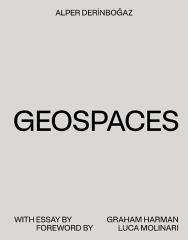Architectural history is a fragment of the long evolution of forms of habitat. The shape of the lands and the way we inhabit them are at the root of all architectural endeavours. However, our established conception of architecture is based on a hierarchy between nature and culture. Modernity and its break from the vernacular has led to a crisis of connections which we are experiencing the effects of. To move towards an architecture more in tune with earth, we need to think in continuities, looking at the emergence of natural forms, the history of human inhabitation and the future of fabrication technologies. What if we see buildings as iterations of nature rather than artificial objects?
This book is an extended visual essay of ideas, images, drawings and projects that follows the work of Alper Derinbogaz over the past decade, framing an approach based on empathy with earth. Exploring architecture through the lens of evolution, Geospaces traces relationships between topography, geology, genetics, ecologies, and construction technologies, arguing that a hybrid approach to making will shape our future habitats.

(0 Comentarios)